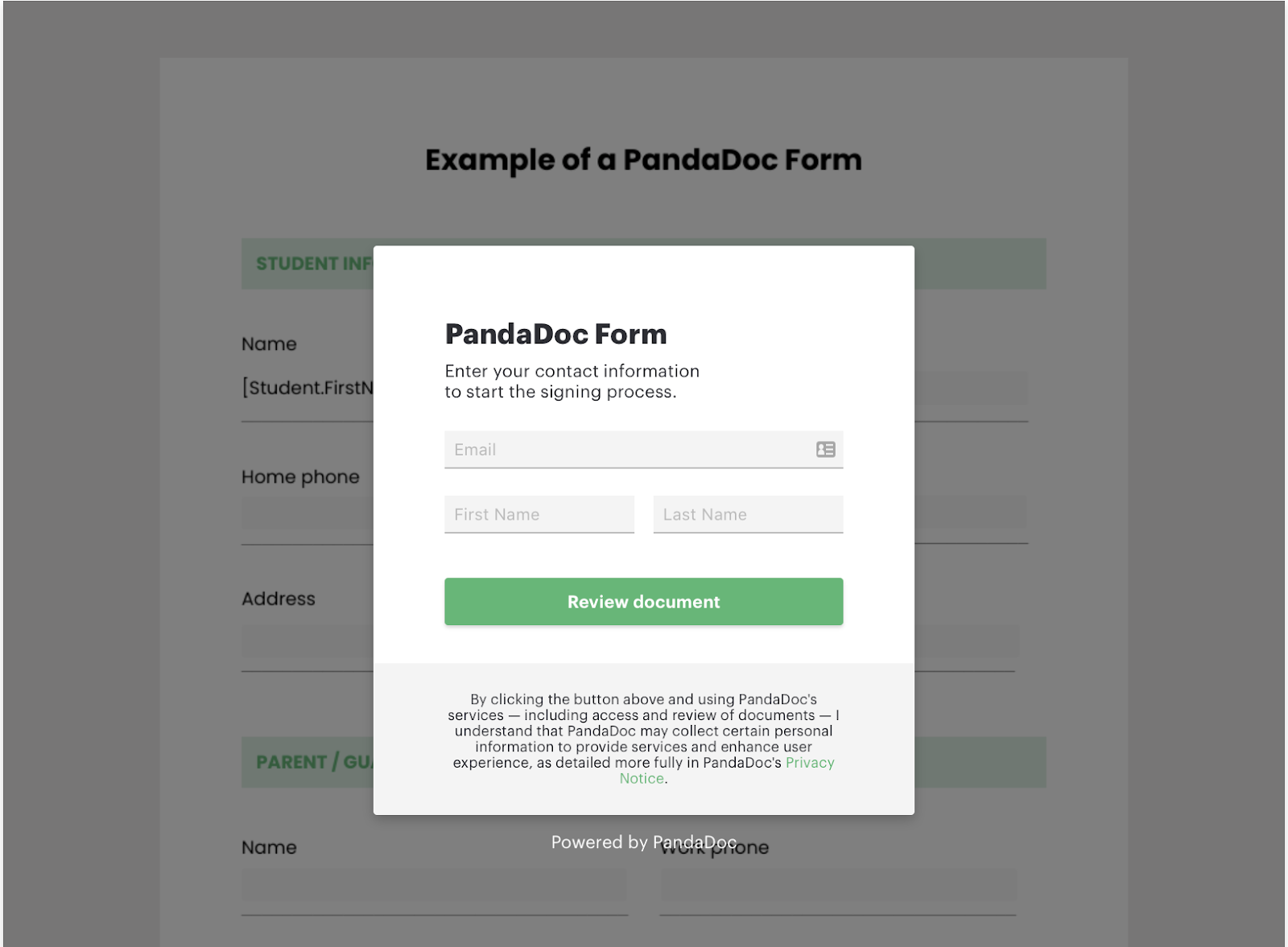

Last updated on
October 1, 2023
When you consider that 80% of marketers have seen an increase in email engagement in the past year, it’s pretty clear that email marketing is a powerful tool that you can use to reach your audience.
However, with a burgeoning content strategy eating away at your team’s time, it can be challenging to consider where email marketing fits.
But forget what you’ve been told before. Email marketing and content marketing aren’t mutually exclusive — they go hand-in-hand.
If you’re smart, you can integrate your email marketing tactics with your content strategy so that they complement each other without too much extra work.
Read on to find out how.
Content marketing is a broad term for creating and distributing all types of marketing and branding content, such as blogs, videos, webinars, podcasts, ebooks, lead magnets, and so on.
While email marketing is often considered a separate category from content marketing, it falls under the same banner. After all, you’re still creating email content that needs to match the look and feel of your other content. A whopping 72% of marketers use email marketing as part of their content strategy.
However, unlike most other content you create, email content is going to potential customers who have already shown an interest in your brand by signing up for your email list. It’s middle-of-the-funnel content designed to nurture potential buyers.
In this sense, your content marketing strategy should work to help your email marketing in two ways.
Firstly, you need to design top-of-the-funnel content to capture email marketing leads.
Secondly, you need to produce content that nurtures email leads and converts them to buyers.
Whether you have a software platform that you want people to sign up for, work with companies as a consultant, or you’re building online courses in the hopes of selling them to your audience, content marketing is an incredibly effective strategy when combined with email marketing.

Remember, email marketing is one of your most cost-effective marketing strategies, with a potential return on investment of $46 for every dollar spent. That’s why emails come in second as the content most produced by marketers, right behind blogs.
Clever marketers team their email marketing strategy with their content strategy so the two can work in unison to net and nurture leads.
India Hughes from Genbook agrees with this approach. She says:
“Content and Email marketing efforts can be greater than the sum of their parts when they are leveraged together. We can learn what content engages a lead, and use that information to nurture them intelligently down the funnel. Likewise when we share content through email, those pages can capitalize on interest to build engagement. The result is a balanced and effective experience that, ultimately, converts.”
Unsure how to integrate your email campaigns with your content strategy? Here’s a detailed guide on how to do it in six steps.
For marketers, generating leads is the top priority.
One way to do this is through a search-engine-optimized (SEO) blog that solves problems for your market.
By targeting keywords that your audience is searching for on Google, you can direct traffic to the website. Once there, offer them helpful content that demonstrates your value as a brand.
As Pam Didner of Global Content Marketing puts it: “Make an effort to be helpful, educational or entertaining.”
To use blogs as a lead generation strategy, integrate a lead capture mechanism to convert readers to leads.
Check out how Wordable does this.

Wordable offers its target audience a useful blog on how to add fonts to Google Docs.
There’s a lead capture mechanism that offers a free trial to the software in the middle of this educational content. For the free trial, leads need to input their email address.
Alternatively, try lead magnets.
Half of the modern marketers use lead magnets, such as downloadable content, to capture email leads. The most popular lead magnets are ebooks, with 27.7% of marketers using this tactic.
You can also try creating webinars. A quarter of marketers offer downloadable webinars to capture lead data.
This is how PandaDoc, a form builder software, captures email leads.

By providing a free example of their form builder, PandaDoc manages to capture lead data for future email marketing campaigns.
While it’s important to develop a strong SEO blog for your content strategy, you want to convince your readers that they should convert into leads.
If you offer all your best content without conditions, there’s no reason for your readers to give you their email data.
Create an incentive to join your newsletter or email marketing list by offering exclusive content to email readers.
This could be exclusive, educational content that provides your audience with regular tips directly to their inbox.
Alternatively, offer promotions and deals that are only available via email lists.
30% of marketers are investing in promotional emails. Not only does the promise of exclusive deals entice new leads, but it also invites email readers to convert. After all, who doesn’t love a bargain?
Look at how The Organic Gardening Catalogue positions its newsletter.

This organic gardening company offers email recipients exclusive product updates and educational gardening guides. On top of this, it also promises access to the best seasonal deals when you join the mailing list.
Think about it this way. Personalization is the number one tactic marketers use to enhance email performance, while audience segmentation is the number one strategy they use to boost engagement.
Use both strategies to pinpoint your audience’s needs and to serve them head-on.
As Cynthia Price, VP of Marketing at Litmus, explains, the secret to email marketing is “integration, segmentation, and experimentation.”
By segmenting your audience, you’re able to categorize potential buyers by their interests. This makes it easier for you to target them with content that resonates.
Creating targeted content that speaks to each audience segment is personalization.
Personalization provides a human connection from your brand to the recipient. It says, “I understand your interests, desires, and behaviors, and I’m offering you the best solution that suits you.” It can be done via social media or t-shirt design or any other way,
As Henni Roini, Marketing Manager of EMEA at HubSpot, explains, “Only the companies and brands that create human connection are going to succeed. This is extremely true with email. You might get short-term benefits from very promotional content, but honest, human, and personalized content creates a following for the long term.”
This doesn’t mean that you need to spend hours crafting individual emails for each recipient on your email list, though.
Try creating segment-specific templates and personalize each as you go.
For example, look at these fundraising outreach templates.

If you’ve segmented your target audience, you can use email marketing software to populate these templates with relevant data. That way, you’re sending personalized emails to your relevant segments without spending too much on each email.
In the words of Shar VanBoskirk, VP and Principal Analyst at Forrester, “Be Human. Be Helpful. Be Handy.”
45% of marketers are looking to add more educational content to their content strategy as it helps to nurture leads by demonstrating your brand’s value.
Email marketing should be no different.
When designing and crafting email campaigns, try creating emails that offer your target audience help with industry-related problems. This demonstrates your expertise as a brand and builds trust between you and your audience.
Look at how financial guru Ramit Sethi achieves this.

Firstly, his emails are extremely colloquial, offering a human connection with the reader. This makes him seem approachable.
More importantly, though, Sethi focuses on offering invaluable advice to educate readers.
Notice how he uses the email to send readers to a longer blog. With this short email, Ramit invites his readers to learn something without cluttering their inboxes. Simultaneously, he boosts traffic to his website.
In today’s world, multi-channel marketing is a given.
Not only does your audience expect to see your brand across multiple platforms, but brands that have a presence on three or more channels experience almost 300% more conversions than those who don’t.
This means your multi-channel content strategy needs to be on point. Consistent branding is the key to this. In fact, brands can expect to see a 33% increase in growth when they have consistent branding.
In terms of your email marketing campaigns, this means your email design and brand voice should reflect the branding on your other channels, such as your social media profiles and blogs.
Bear in mind that if you’re using a content generator to produce your email content, it’s not just correct English grammar you need to watch out for. You may need to tweak some of the final content to make sure it matches your brand voice.
Neil Patel’s email marketing is an excellent example of consistent branding.

Note the conversational tone in his emails and the short, to-the-point delivery style. On top of this, notice the simplistic design and branded avatar headshot.
When you click the link in his email, you’re taken to a YouTube video pop-up on his website that explains the concepts from the email in more depth.

Firstly, notice how the branding is similar to the email, with simplistic design and Neil Patel’s face.
When you watch the video, Neil Patel’s brand voice matches the email with the same conversational, friendly tone.
This coherency incites a feeling of trust and connection with the brand.
In his book The Lean Startup, Eric Ries advocates a cycle of building, testing, and learning when starting a company.
Email marketing is no different:
Put it this way, 85% of marketers test their email campaigns while 93% analyze email campaign performance.
By doing this, you start to see patterns in behavior that lead to conversions, so you can better tailor campaigns in the future.
Don't be scared to test two campaigns at once. A/B testing allows you to create two different versions of an email campaign. One version is sent to half your audience, while the other version goes to the other half.
Use this tactic to try out different email designs or content styles to see which resonate better with each audience segment.
Think of your content marketing and email marketing strategies as a team. By working together, they can achieve more than the sum of their parts.
Don’t isolate your email campaigns from your content strategy. Instead, use blog and social media content to capture email leads. Nurture your email list with a consistent brand voice that they recognize from your other channels.
Want help capturing leads to better integrate your content strategy with your email campaign? Try mailmunch today.
Content marketer by day and book nerd by night, Momina works at Mailmunch as a Marketing Communications Specialist. Momina eats, sleeps, and breathes content marketing. Her expertise ranges from ideation to production to distribution of content, thanks to 4+ years of experience in the B2B content marketing sphere.
Tags:
.png)
M. Usama
March 21, 2024

M. Usama
March 18, 2024

M. Usama
March 11, 2024